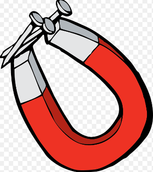Planning and Carrying out Investigations
Goals:
- Develop an understanding of what it means for students to engage in “planning and carrying out investigations”
- Engage in the science practice of planning and carrying out investigations
- Evaluate and improve a "typical lab" activity
- *Explore how student engagement in this science practice progresses across grades
- *Design or revise a lesson that engages students in planning and carrying out an investigation
Agenda:
|
Materials:
|
1. Air Investigation
The Context:
The Task:
Discussion Questions:
- This activity comes from the FOSS 6th grade Weather & Water Unit, and specifically from Investigation 2: Where’s the Air? At this point in the unit students have already learned that air has mass.
- If you want more information about the lesson from which this activity came from, see the Air Lesson Plan handout.
The Task:
- Examine the materials at your table. These materials include: round balloons, plastic zip bags, clear straws, string, paper clips, and tape.
- In small groups, use the given materials to design and carry out an investigation to demonstrate that air has mass.
- Engage in this task as your students would, but also wear your “teacher hat” and think about how you might prepare and support your students in doing this task.
Discussion Questions:
- Would any group like to share how they went about completing this task?
- Did all of the groups plan and carry out their investigations in the same way?
- What were some similarities between the different investigations?
2. Defining Planning and Carrying out Investigations
Think-pair-share:
- What do you think of when you hear the term "investigation"?
|
Investigating Practice
|
Sensemaking Practices
|
Critiquing Practices
|
|
The Instructional Leadership Science Practices website defines an “investigation” as:
A systematic way to gather data about the natural world, either in the field or in the laboratory setting When students engage in this science practice they:
|
|
3. Evaluating a Typical Lab
|
This typical lab activity was designed for elementary aged students exploring how magnets interact with other objects.
The Task:
out” investigations
|
4. BPS Video Example
The Context:
- This is a video of a Kindergarten class from BPS that is planning and carrying out an investigation.
- The lesson the class is engaged in comes from the FOSS Wood & Paper Unit, and specifically from Investigation 1, Part 1: Sink the Pine and Plywood.
- As you watch the video, jot down notes in the Video Note Catcher handout of ways that you see and hear students engaged in this science practice.
Discussion Questions:
- How did you see and hear students engaged in this “planning and carrying out investigations” in the video?
- What challenges do you think your students might encounter when engaged in this science practice? What instructional strategies might you use to support them?
- What questions do you still have about the science practice of “planning and carrying out investigation”?
*Extension Activity - Creating or Revising a Current Lesson
The Task:
- Either independently or in groups: think of an investigatory lesson plan that you currently teach (or plan to teach). Use the NGSS Appendix F handout to consider the ways that this lesson aligns (or does not align) with the expectations for this science practice outlined in the grade band that you teach.
- Make revisions to your current lesson, or write a new lesson, in order to better provide your students with the opportunity to plan and carry out an investigation.
- In a future meeting, share this lesson with other teachers for feedback
*Extension Activity - How the Science Practice Progresses Across Grades
The Task:
- How does this progression align (or not align) with how students currently engage in "planning and carrying out investigations" in your classroom?
- Read the descriptions of “Planning and Carrying out Investigations” for grades K-12 on the NGSS Appendix F handout.
- Conduct a think-pair-share around the following questions:
- How does this progression align (or not align) with how students currently engage in "planning and carrying out investigations" in your classroom?
© 2016 Boston Public Schools Science Department



